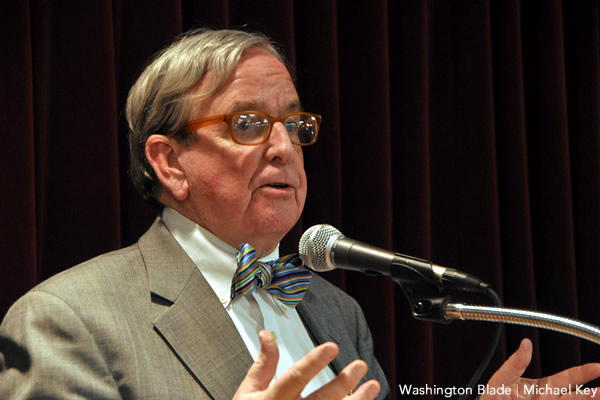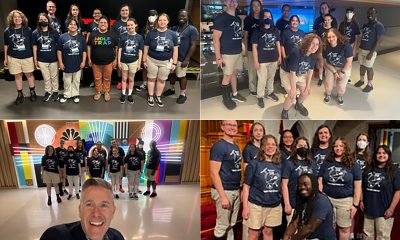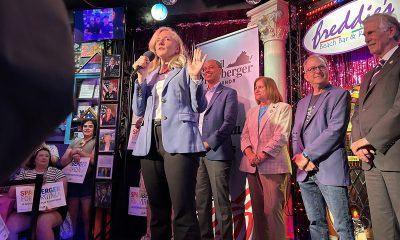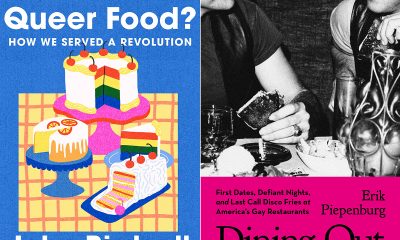Opinions
Jim Graham, a life well lived
A complicated man who made a difference
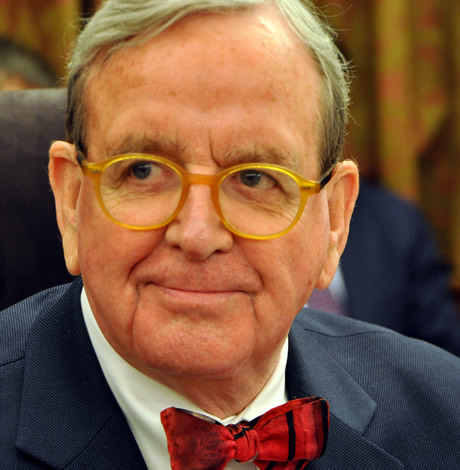
Jim Graham was born James McMillan Nielson Graham in Wishaw, Scotland, on Aug. 26, 1945. Surely his parents could never have envisioned the road their son’s life would take when they brought him from war ravaged Britain to America to settle in Michigan. Jim lived his life to the hilt in many ways. He was a brilliant man with a huge ego who at times made questionable decisions. He could be arrogant yet his life’s work did much good for many.
The Washington Post reported as a young man Jim was an anti-war activist who said, “It was obvious to anyone who was listening that the United States was planning to forcibly bring the Vietnamese people to their knees at whatever cost. He wore his hair in a ponytail and contemplated returning to Scotland and was relieved when he got a low draft number.” I can understand that sentiment having grown up at the same time living through the turbulent Vietnam War years also protesting the war and having a pony tail.
Jim earned his law degree from the University of Michigan and clerked for Supreme Court Justice Earl Warren. According to the Post, Warren “hired him to help him write his memoirs but the chief justice died before the project began.”
I first met Jim when I volunteered with Whitman-Walker Clinic in 1986. That was the first of many interactions with him over the years. When first meeting Jim it was clear the major turning point in his life was in 1981 when he became president of the board at WWC. The same year according to a history of the clinic posted on its website, “The Centers for Disease Control and Prevention’s weekly Morbidity and Mortality Report contains an account of five young gay men who had an unusual cluster of infections. This was the first medical report on what would come to be known as AIDS.”
From that time until he resigned from the clinic to begin his time on the Council of the District of Columbia Jim Graham’s name was inextricably associated with HIV/AIDS. Whitman-Walker began its life as a VD clinic for gay men, part of what then was known as the Washington Free Clinic. By the time AIDS began ravaging the gay community in the District of Columbia Jim had begun to build the clinic into an institution recognized for its work across the nation and around the world. In 1985, the clinic opened the first of what were to become numerous homes for people living with AIDS who were unable to find any other housing. Like so many projects Jim undertook eventually there were questions about how the homes were bought and sold. But when it came to the clinic Jim had a handpicked board and made many decisions on his own as he built the clinic to serve the community in the way he thought best. During his years at WWC Jim was an ever present presence in the community. He dedicated his life at the time to helping those who were suffering. He often told me about how many funerals he had attended saying after each one he would first feel a sense of despair but that would quickly turn into renewed energy to continue to make a difference for those still living. Those were the years when even young men would first turn to the obituary columns each morning to see if any of our friends had died. Jim spent countless hours raising money to build the clinic and keep up with the case load that kept growing. He wanted to see a cure for AIDS but his lasting contribution and fundraising efforts were dedicated to trying to make life better for those living with AIDS.
One of his proudest moments came in 1993 when he introduced Elizabeth Taylor at the dedication of the Elizabeth Taylor Medical Center at WWC. The center that Jim fought to build was able to offer more services to the clients of WWC including an eye care center, x-ray facilities, an expanded laboratory, a new dental facility and 12 examination rooms.
By 1998, Jim’s ego was demanding a bigger platform and he applied for the position of executive director of amfAR, the AIDS foundation founded by Elizabeth Taylor and Mathilde Krim, Ph.D. He traveled to California for final interviews with Elizabeth Taylor but in the end didn’t get the job. So he made what some at the time considered an ill-advised decision, to run against Ward 1 Council member Frank Smith. Jim won that race and was to spend the next 16 years on the Council until he was defeated in 2014 by Brianne Nadeau.
His years on the Council were spent fighting for the poor and underserved. While supporting gentrification of Columbia Heights and bringing new retail and new housing he never gave up his fight for more affordable housing and to keep the safety net of government programs for those in need. He was everywhere in his Ward driving his beige VW convertible.
Jim’s outsized personality sometimes got in his way and his arrogance could at times cloud some of the good things he did. There were many sides to Jim Graham as there often are to brilliant and driven people. When he left the Council he shocked many when in an interview with the Blade he said, “I’ve told people I’m in the adult entertainment industry.” Graham had organized and was promoting a male strip show for a club on Georgia Avenue, which he called ‘Rock Hard Sunday.’ He was to do that until his recent passing.
If you look at the totality of Jim’s life it is clear he was dedicated to helping others and did that in many different ways. He put his heart and soul into everything he did. He will be missed and he will be remembered fondly by the many he helped; and with gratitude by the families and friends of those he helped who are no longer with us. Jim, rest in peace, knowing you lived a good life.
Peter Rosenstein is a longtime LGBT rights and Democratic Party activist. He writes regularly for the Blade.
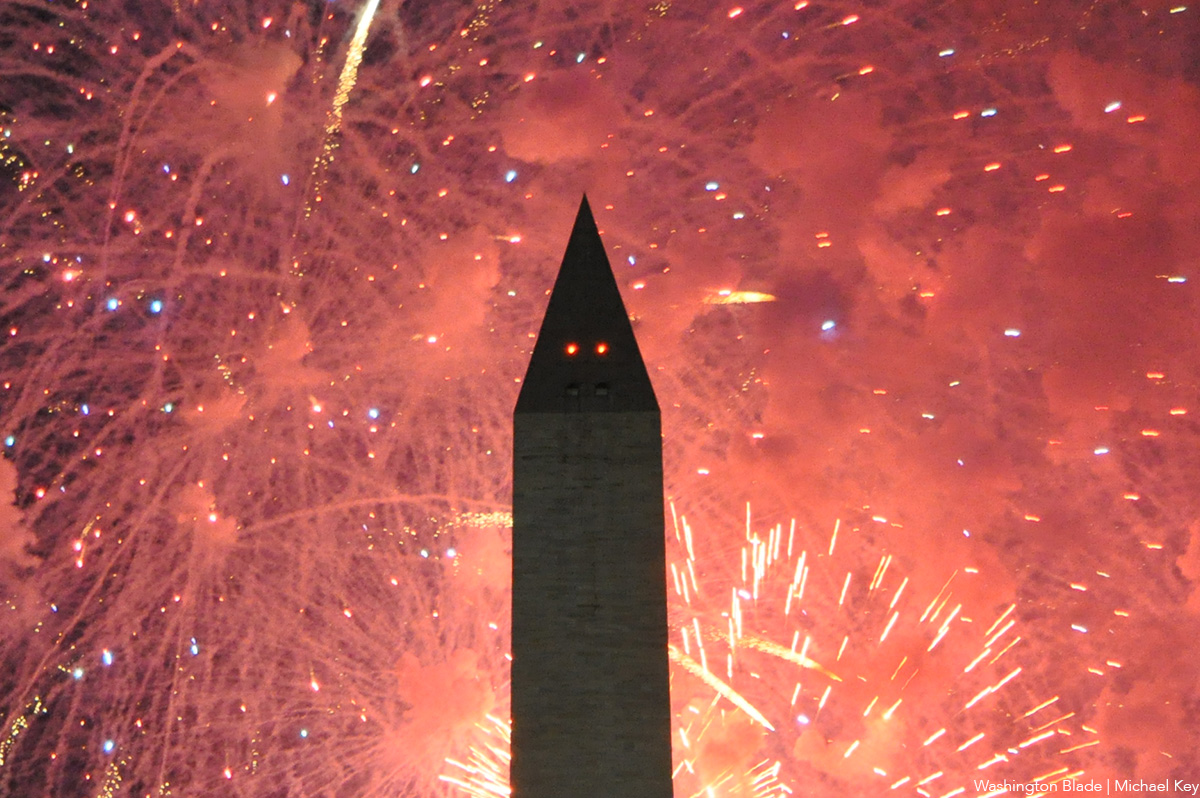
Independence Day, commonly known as the Fourth of July, is a federal holiday commemorating the ratification of the Declaration of Independence by the Second Continental Congress on July 4, 1776, establishing the United States of America. The delegates of the Second Continental Congress declared the 13 colonies are no longer subject (and subordinate) to the monarch of Britain, King George III and were now united, free, and independent states. The Congress voted to approve independence by passing the Lee resolution on July 2, and adopted the Declaration of Independence two days later, on July 4.
Today we have a felon in the White House, who wants to be a king, and doesn’t know what the Declaration of Independence means. Each day we see more erosion of what our country has fought to stand for over the years. We began with a country run by white men, where slavery was accepted, and where women weren’t included in our constitution, or allowed to vote. We have come far, and next year will celebrate 250 years. Slowly, but surely, we have moved forward. That is until Nov. 5, 2024, when the nation elected the felon who now sits in the Oval Office.
There are some who say they didn’t know what he would do when they voted for him. They are the ones who were either fooled, believing his lies, or just weren’t smart enough to read the blueprint which laid out what he would do, Project 2025. It is there for everyone to see. There should be no surprise at what he is doing to the country, and the world. Last Friday his Supreme Court, and yes, it is his, the three people he had confirmed in his first term, gave him permission to be the king he wants to be. The kind of king our Declaration of Independence said we were renouncing. A man who with the stroke of a pen can ruin thousands of lives, and change the course of America’s future. A man who has set back our country by decades, in just a few months.
So, I understand why many are suggesting there is nothing to celebrate this Fourth of July. How do we have parties, and fireworks, celebrating the 249th year of our independence when so many are being sidelined and harmed by the felon and his MAGA sycophants in the Congress, and on the Supreme Court. Yes, there are those celebrating all he is doing. Those who want to pretend transgender people don’t exist, and put their lives in danger; those who think it’s alright to take away a women’s right to control her body, and her healthcare; those who think parents should be able to interfere on a daily basis with their children’s schooling and wipe out the existence of gay people for them. Those who pretend there was a mandate in the last election, when it was only won by about 1 percent. Those who think disparaging veterans, firing them, and taking away their healthcare, is ok. Those in the LGBTQ community like Log Cabin Republicans, who think supporting a racist, sexist, homophobe is the right thing to do.
So, what do we, as decent caring people, do this Fourth of July. What do we say to those who are being harmed as we celebrate. What do we say to those trans people, those women, those immigrants who came here to escape their own dictators, and are now finding they have come to a country with its own would-be dictator. I say to them, please don’t give up on America. Don’t give up on the possibility decent loving people in our country will finally wake up and say, “enough.” That the majority of Americans will remember we fought a revolution to escape a king, and we fought a civil war to end slavery. That we moved forward and gave women the right to vote, and gave the LGBTQ community the right to marry. Don’t give up on the people that did all that, and think they won’t rise up again, and tell the felon, racist, homophobe, misogynist, found liable for sexual assault, now in the White House, and his sycophants in congress, and his cult, that we will take back our country in the 2026 midterm elections. That we will vote in large numbers, and demand our freedom from the tyranny that he is foisting on our country.
So yes, I will celebrate this Fourth of July not for what is happening in our country today, but rather for what our country actually stands for. Not for birthday parades, and abandonment of the heroes in Ukraine in support of dictators like Putin. But for the belief the decent people in our country will rise up and vote. That is what I will celebrate and pray for this Fourth of July. That is what I think the fireworks will mean this July Fourth. I refuse to accept defeat the same way our revolutionary soldiers wouldn’t, and the way our troops in the civil war wouldn’t till the confederacy was defeated.
I will celebrate this Fourth of July because I refuse to accept we will not defeat those who would destroy our beautiful country, and what it really stands for.
Peter Rosenstein is a longtime LGBTQ rights and Democratic Party activist.
Opinions
Is it time for DC to have new congressional representation?
Del. Eleanor Holmes Norton will turn 89 in June
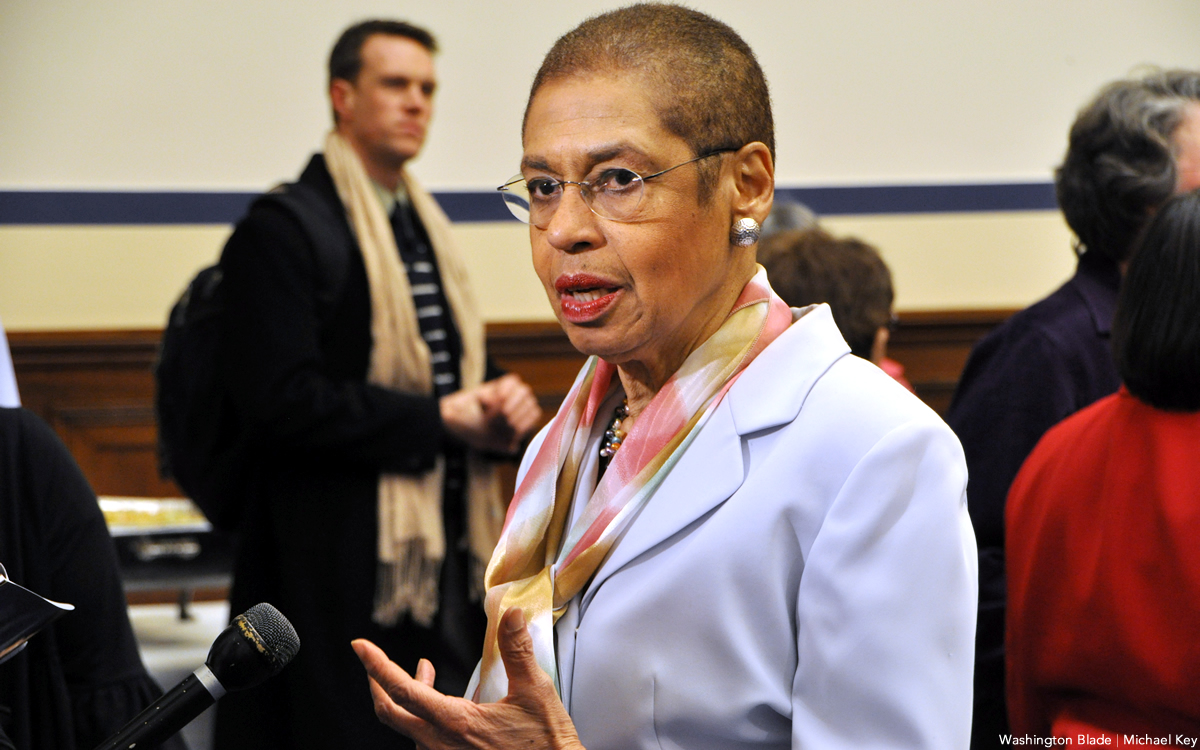
With WorldPride, Supreme Court decisions, military parades in our streets, mayor and City Council discussions about a new football stadium, it is entirely understandable if we missed the real local political story for our future in the halls of Congress. Starting this past May, the whispered longtime discussions about the city’s representation in Congress broke out. Stories in Mother Jones, Reddit, Politico, Axios, NBC News, the New York Times, and even the Washington Post have raised the question of time for a change after so many years. A little background for those who may not be longtime residents is definitely necessary.
Since the passage of the 1973 District of Columbia Home Rule Act, we District residents have had only two people represent us in Congress, Walter Fauntroy and Eleanor Holmes Norton, who was first elected in 1990 after Mr. Fauntroy decided to run for mayor of our nation’s capital city.
No one can deny Mrs. Norton’s love and devotion for the District. Without the right to vote for legislation except in committee, she has labored hard and often times very loud to protect us from congressional interference and has successfully passed District of Columbia statehood twice in the House of Representatives, only to see the efforts fail in the U.S. Senate where our representation is nonexistent.
However, the question must be asked: Is it time for a new person to accept the challenges of working with fellow Democrats and even with Republicans who look for any opportunity to harm our city? Let us remember that the GOP House stripped away millions of OUR dollars from the D.C. budget, trashed needle exchange programs, attacked reproductive freedoms, interfered with our gun laws at a moment’s notice, and recently have even proposed returning the District to Maryland, which does not want us, or simply abolishing the mayor and City Council and returning to the old days of three commissioners or the very silly proposal to change the name of our Metro system to honor you know you.
Mrs. Norton will be 89 years old next year around the time of the June 2026 primary and advising us she is running for another two-year term. Besides her position there will be other major elected city positions to vote for, namely mayor, several City Council members and Board of Education, the district attorney and the ANC. Voting for a change must not be taken as an insult to her. It should be raised and praised as an immense thank you from our LGBTQ+ community to Mrs. Norton for her many years of service not only as our voice in Congress but must include her chairing the Equal Employment Opportunity Commission, her time at the ACLU, teaching constitutional law at Georgetown University Law School, and her role in the 1963 March on Washington.
Personally, I am hoping she will accept all the accolades which will come her way. Her service can continue by becoming the mentor/tutor to her replacement. It is time!
John Klenert is a longtime D.C. resident and member of the DC Vote and LGBTQ+ Victory Fund Campaign boards of directors.
Opinions
Supreme Court decision on opt outs for LGBTQ books in classrooms will likely accelerate censorship
Mahmoud v. Taylor ruling sets dangerous precedent
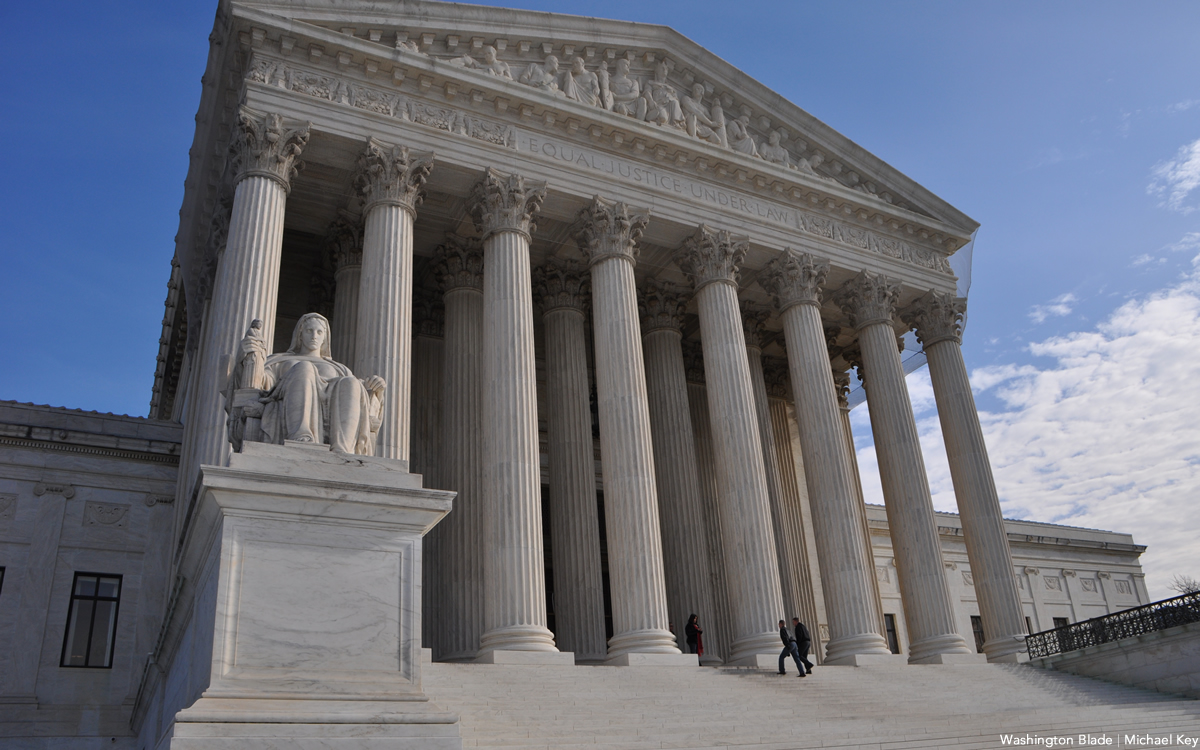
With its ruling Friday requiring public schools to allow parents to opt their children out of lessons with content they object to — in this case, picture books featuring LGBTQ+ characters or themes — the Supreme Court has opened up a new frontier for accelerating book-banning and censorship.
The legal case, Mahmoud v. Taylor, was brought by a group of elementary school parents in Montgomery County, Md., who objected to nine books with LGBTQ+ characters and themes. The books included stories about a girl whose uncle marries his partner, a child bullied because of his pink shoes, and a puppy that gets lost at a Pride parade. The parents, citing religious objections, sued the school district, arguing that they must be given the right to opt their children out of classroom lessons including such books. Though the district had originally offered this option, it reversed course when the policy proved unworkable.
In its opinion the court overruled the decisions of the lower courts and sided with the parents, ruling that books depicting a same-sex wedding as a happy occasion or treating a gay or transgender child as any other child were “designed to present … certain contrary values and beliefs as things to be rejected.” The court held that exposing children to lessons including these books was coercive, and undermined the parents’ religious beliefs in violation of the free exercise clause of the First Amendment.
This decision is the latest case in recent years to use religious freedom arguments to justify decisions that infringe on other fundamental rights. The court has used the Free Exercise Clause of the First Amendment to permit companies to deny their employees insurance coverage for birth control, allow state-contracted Catholic adoption agencies to refuse to work with same-sex couples, and permit other businesses to discriminate against customers on the basis of their sexual orientation.
Here, the court used the Free Exercise Clause to erode bedrock principles of the Free Speech Clause at a moment when free expression is in peril. Since 2021, PEN America has documented 16,000 instances of book bans nationwide. In addition, its tracking shows 62 state laws restricting teaching and learning on subjects from race and racism to LGBTQ+ rights and gender — censorship not seen since the Red Scare of the 1950s.
Forcing school districts to provide “opt outs” will likely accelerate book challenges and provide book banners with another tool to chill speech. School districts looking to avoid logistical burdens and controversy will simply remove these books, enacting de facto book bans that deny children the right to read. The court’s ruling, carefully couched in the language of religious freedom, did not even consider countervailing and fundamental free speech rights. And it will make even more vulnerable one of the main targets of those who have campaigned for book bans: LGBTQ+ stories.
When understood in this wider context, it is clear that this case is about more than religious liberty — it is also about ideological orthodoxy. Many of the opt-out requests in Montgomery County were not religious in nature. When the reversal of the opt-out policy was first announced, many parents voiced concerns that any references to sexual orientation and gender identity were age-inappropriate.
The decision could allow parents to suppress all kinds of ideas they might find objectionable. In her dissent, Justice Sotomayor cites examples of objections parents could have to books depicting patriotism, interfaith marriage, immodest dress, or women’s rights generally, including the achievements of women working outside the home. If parents can demand a right to opt their children out of any topic to which they hold religious objections, what is to stop them from challenging books featuring gender equality, single mothers, or even a cheeseburger, which someone could theoretically oppose for not being kosher? This case throws the door open to such possibilities.
But the decision will have an immediate and negative impact on the millions of LGBTQ+ students and teachers, and students being raised in families with same-sex parents. This decision stigmatizes LGBTQ+ stories, children, and families, undermines free expression and the right to read, and impairs the mission of our schools to prepare children to live in a diverse and pluralistic society.
Literature is a powerful tool for building empathy and understanding for everyone, and for ensuring that the rising generation is adequately prepared to thrive in a pluralistic society. When children don’t see themselves in books they are left to feel ostracized. When other children see only people like them they lose out on the opportunity to understand the world we live in and the people around them.
Advocates should not give up but instead take a page from the authors who have written books they wished they could have read when they were young — by uplifting their stories. Despite this devastating decision, we cannot allow their voices to be silenced. Rather, we should commit to upholding the right to read diverse literature.
Elly Brinkley is a staff attorney with PEN America.

